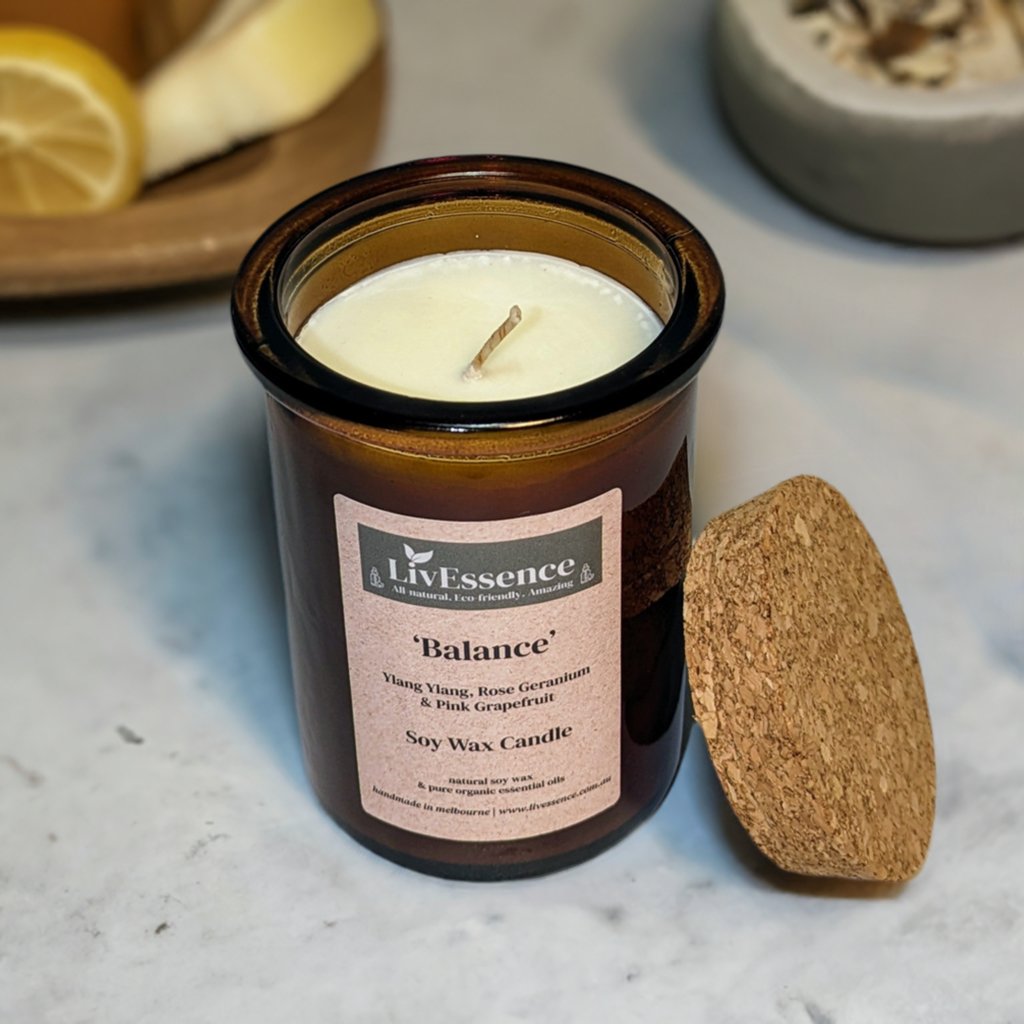From Wick to Wax: Recognizing the Chemistry Behind Soy Wax Candles and Their Environmental Influence
As we brighten our rooms with the cozy glow of candle lights, there exists a world of elaborate chemistry behind the relatively straightforward act of lighting a soy wax candle. The choice in between soy and paraffin wax prolongs beyond mere aesthetics, diving into the world of environmental impact and the really structure of the materials. Understanding the molecular structure of soy wax and its combustion process clarifies the exhausts launched right into our environments. Join us as we untangle the scientific ins and outs behind soy wax candles and discover their implications on our atmosphere.
Soy Wax Vs. Paraffin Wax
When comparing soy wax and paraffin wax for candle making, it is vital to recognize the distinctive qualities and benefits of each product. Soy wax is a natural, renewable energy acquired from soybean oil, making it green and eco-friendly - crystal soy candles. On the other hand, paraffin wax is a by-product of oil refining, which increases concerns regarding its environmental impact and sustainability
Soy wax candle lights melt cleaner and emit less soot compared to paraffin wax candles, making them a much healthier option for indoor air high quality. Furthermore, soy wax has a reduced melting factor, permitting a longer-lasting candle that disperses scent better. Paraffin wax, on the other hand, tends to shed faster and less cleanly, possibly launching damaging chemicals into the air.
From a sustainability viewpoint, soy wax is preferred for its biodegradability and eco-friendly sourcing, aligning with the expanding customer preference for ecologically conscious products. While paraffin wax has actually been a conventional option in candle making due to its price and convenience of use, the change in the direction of environmentally friendly options like soy wax is gaining energy in the market.
Chemical Structure of Soy Wax

Combustion Refine in Soy Candles
The chemical structure of soy wax directly affects the combustion procedure in soy candles, impacting aspects such as burn time, scent release, and ecological influence. When a soy candle light is lit, the warmth from the fire thaws the wax near the wick.
The burning efficiency of soy candle lights is influenced by the purity of the soy wax and the top quality of the wick. In addition, soy wax candle lights have a lower ecological impact contrasted to paraffin candle lights due to their eco-friendly and biodegradable nature.

Environmental Advantages of Soy Wax

Taken into consideration a lasting option to typical paraffin wax, soy wax supplies remarkable environmental benefits that make it a popular option amongst eco-conscious consumers. One substantial advantage of soy wax is its eco-friendly sourcing. Soy wax is stemmed from soybean oil, which is primarily grown in the USA. The growing of soybeans assists support neighborhood farmers and reduces the dependence on non-renewable nonrenewable fuel sources used in paraffin wax production. Learn More Here Furthermore, soy wax is naturally degradable, implying it damages down normally without releasing dangerous toxins into the atmosphere. This characteristic makes soy wax candles an extra eco-friendly alternative contrasted to paraffin wax candle lights, which are made from petroleum, a non-renewable source. Moreover, soy wax burns cleaner and creates less soot than paraffin wax, contributing to much better indoor air quality and decreasing the need for cleaning and maintenance. Overall, the ecological benefits of soy wax line up with the growing need for eco-friendly and sustainable products on the market.
Recycling and Disposal Considerations
Recycling and appropriate disposal of soy wax candle lights play a crucial duty in keeping ecological sustainability and reducing waste in neighborhoods and families. The very first step is to make sure that the candle has melted entirely when it comes to recycling soy wax candle lights. This can be achieved by permitting the candle to melt up until the wick is no much longer usable, and then letting the remaining wax cool and solidify. When the wax has actually solidified, it can be meticulously gotten rid of from the container.

In terms of disposal, if recycling is not an alternative, soy wax candles are eco-friendly and can be safely gotten rid of in the majority of household waste systems. It is always recommended to check with regional browse around here recycling facilities or waste monitoring services for specific guidelines on candle light disposal to make certain appropriate handling and ecological security.
Verdict
To conclude, the chemistry behind soy wax candles discloses their environmental advantages over paraffin wax candle lights. Soy wax, originated from soybean oil, burns cleaner and generates see page less soot when compared to paraffin wax. The burning process in soy candle lights is a lot more efficient, leading to a longer and extra even melt. In addition, soy wax is naturally degradable and renewable, making it an extra sustainable option for candle manufacturing. Reusing and appropriate disposal of soy wax candle lights further add to their environmental impact.
When comparing soy wax and paraffin wax for candle production, it is important to recognize the distinct characteristics and benefits of each material (home fragrance).Soy wax candle lights melt cleaner and produce much less residue contrasted to paraffin wax candle lights, making them a healthier selection for indoor air high quality.Considered a lasting option to conventional paraffin wax, soy wax supplies notable environmental benefits that make it a prominent selection among eco-conscious consumers. Soy wax burns cleaner and creates less soot than paraffin wax, contributing to much better interior air top quality and reducing the need for cleaning and maintenance.In conclusion, the chemistry behind soy wax candle lights discloses their ecological benefits over paraffin wax candle lights